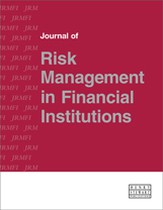Measuring investor sentiment and behaviour to gauge financial risk
Abstract
Whether financial markets are governed by rational forces or emotional responses has long been debated. The spectacular rise of commodity futures prices and the current plunge in value stocks have intensified the debate, highlighting that implied volatility is not an accurate measure of market risk. Asset managers traditionally assume irrational investor behaviour when creating and administering portfolios but this is hindered by a lack of diagnostic tools. In particular, they are unable to adapt to emotional and moderate cognitive biases at high wealth levels to modify investor behaviour at lower wealth levels. Henceforth, practitioners should rely on specific quantitative guidelines when modifying asset allocations to account for biased behaviour. As a result, specific quantitative guidelines must be followed when modifying asset allocations to account for biased behaviour. This paper proposes a framework for better understanding how behavioural finance can be associated with a classical approach in many areas of investing, including valuation. The paper will discuss key behavioural phenomena, notably market sentiment and noise trading, integrated as parameters in a new quantitative risk–return calculation. This comprehensive model will suggest acceptable discretionary distances from the mean–variance output for determining the best practical allocation. Finally, the paper compares the returns of so-called ‘behavioural mean–variance portfolios’ with those of traditional mean–variance-efficient portfolios.
The full article is available to subscribers to the journal.
Author's Biography
Yves Rannou recently joined Barclays Capital, as an equity derivatives and commodity analyst. He is responsible for developing or sourcing both internal and outsourced risk management software solutions. He has an MBA (HEC Nantes) and a master’s degree in financial markets (Strathclyde University). His postgraduate thesis ‘The trading niche of penny stocks’ was awarded a CFPI distinction. Previously, he worked as a research assistant at Société Générale, creating new risk-adjusted measures for securitised products. He has also lectured MSc students at the Audencia School of Management. His research interests are focused on risk management, options pricing and dynamic asset allocation. Forthcoming academic papers include ‘Investing in emerging markets: An asymmetric stochastic multivariate volatility model to diversify a portfolio of assets efficiently’, for the 2008 Stochastic Modelling Symposium sponsored by the Canadian Institute of Actuaries.
Citation
Rannou, Yves (2008, September 1). Measuring investor sentiment and behaviour to gauge financial risk. In the Journal of Risk Management in Financial Institutions, Volume 1, Issue 4. https://doi.org/10.69554/JYJJ4459.Publications LLP
